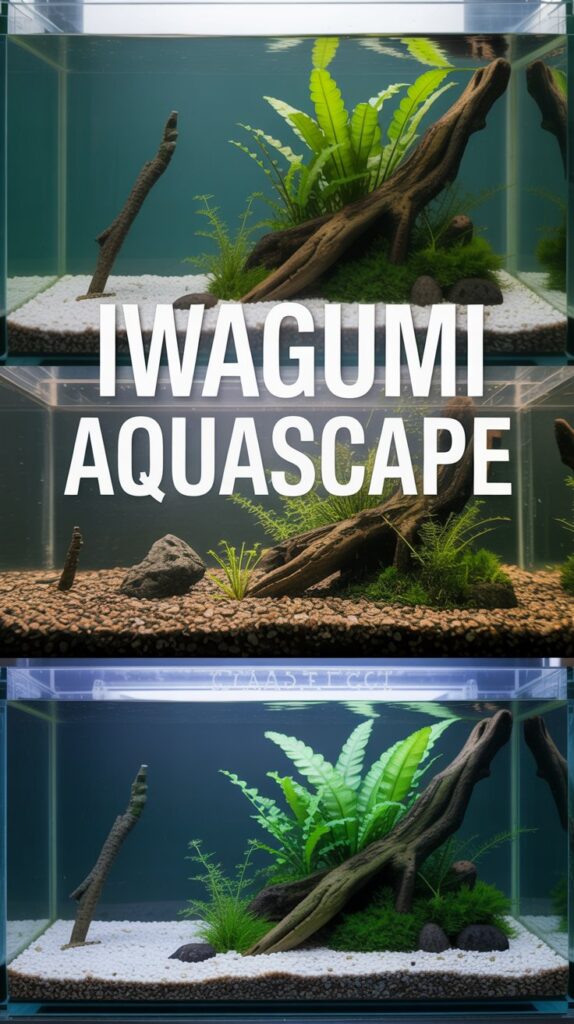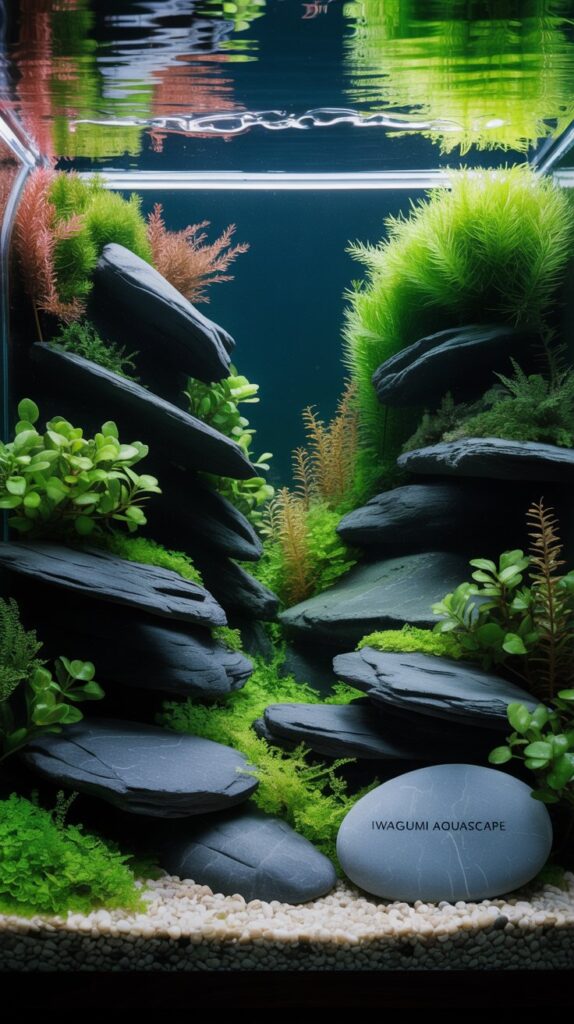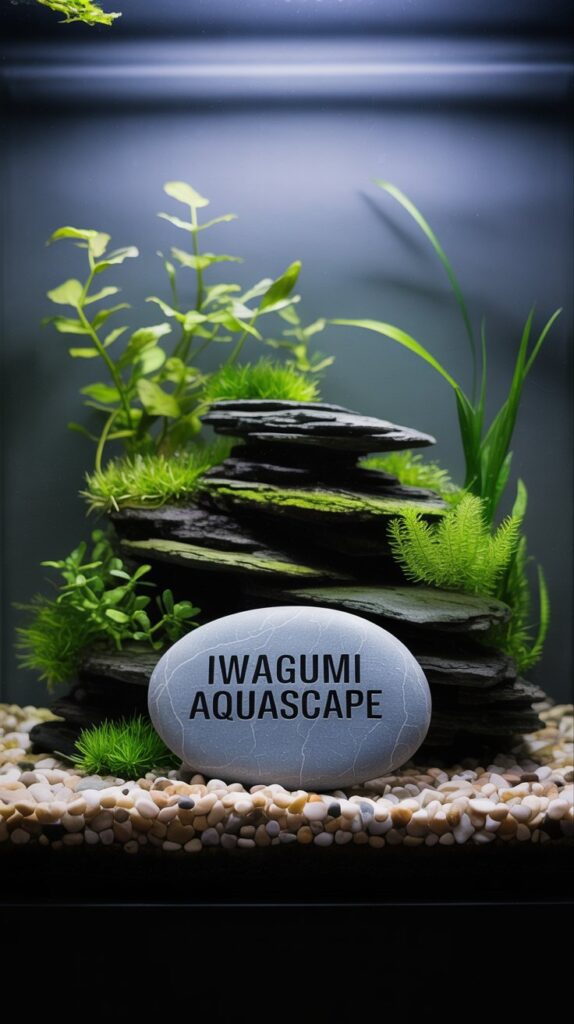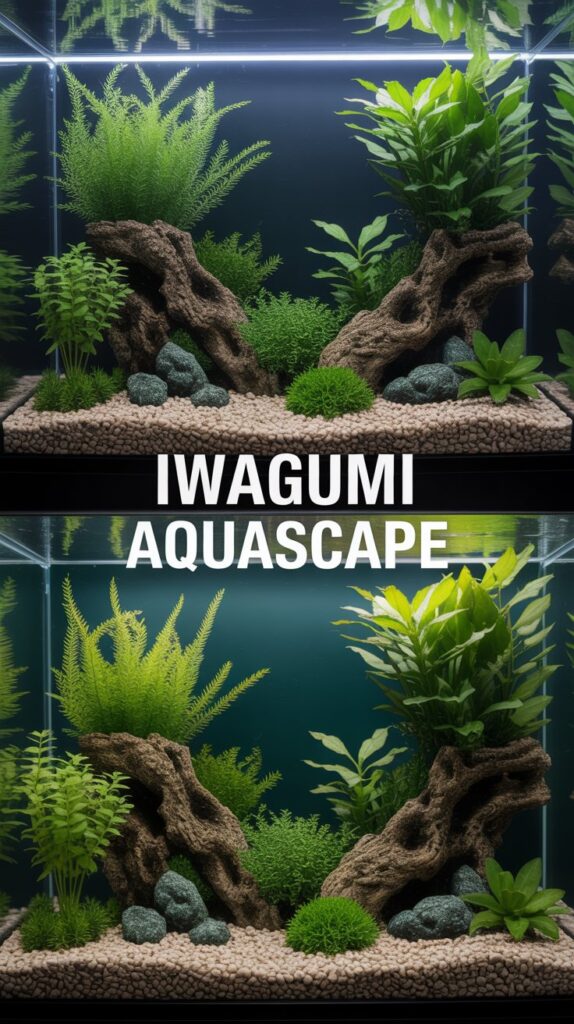Aquascaping is the art of arranging aquatic plants, stones, and driftwood in an aquarium to create an underwater landscape. Among the many styles of aquascaping, the Iwagumi aquascape stands out as one of the most elegant, minimalistic, and meditative. Originating from Japanese tradition, the Iwagumi style emphasizes simplicity, balance, and harmony with nature. Unlike other aquascaping methods that may rely heavily on a variety of plants and decorative materials, Iwagumi aquascaping is primarily stone-based, with plants playing a supporting role to highlight the natural beauty of the rocks.
In this article, we will explore the origins, principles, design techniques, plants, fish choices, maintenance tips, and setup process of the Iwagumi aquascape. By the end, you’ll have a clear roadmap for creating your own peaceful underwater garden.
What is Iwagumi Aquascaping?
The word Iwagumi translates to “rock formation” in Japanese. In the context of aquascaping, it refers to a layout style where rocks form the backbone of the design, and plants are arranged to enhance the natural look. Unlike Dutch aquascaping, which emphasizes plant diversity, or jungle aquascapes that mimic dense forests, Iwagumi aquascapes use a limited number of plant species and carefully placed rocks to represent the simplicity and balance found in Japanese Zen gardens.

This style was popularized by Takashi Amano, a legendary aquascaper and founder of Aqua Design Amano (ADA). His vision was to bring the serenity of nature into aquariums, allowing aquarists to create miniature worlds that inspire calmness and reflection.
Core Principles of Iwagumi Aquascape
To understand Iwagumi, it’s essential to learn its foundational principles:
1. The Rule of Odd Numbers
An Iwagumi layout typically features odd numbers of rocks (3, 5, 7, etc.). This creates a more natural look since even numbers can feel artificial and symmetrical.
2. The Main Stone (Oyaishi)
At the heart of every Iwagumi aquascape is the Oyaishi, the largest and most dominant stone. It is usually placed slightly off-center, following the golden ratio (rule of thirds), to provide balance and focal interest.
3. Secondary Stones (Fukuishi and Soeishi)
Supporting stones are placed around the Oyaishi:
- Fukuishi – the second-largest stone, complementing the Oyaishi.
- Soeishi – smaller stones that help create flow and direction.
- Suteishi – “sacrificial stones” that may not be visible but are important for overall balance.
4. Minimal Plant Variety
Iwagumi tanks often use a single carpeting plant or a few plant species at most. The goal is to highlight the rocks, not overshadow them with greenery.
5. Balance and Harmony
The design must feel natural, as though it could exist in the real world. Rocks should appear to be part of the earth, with plants growing naturally around them.
Setting Up an Iwagumi Aquascape

Creating an Iwagumi aquascape requires patience and attention to detail. Here’s a step-by-step guide:
Step 1: Choosing the Tank
- A rimless glass aquarium is ideal since it provides an unobstructed view.
- Popular sizes include 20–60 liters for beginners, but larger tanks provide more dramatic scapes.
Step 2: Selecting Substrate
- Nutrient-rich aquasoil is best since Iwagumi layouts rely heavily on carpeting plants.
- Add a layer of powder-type soil on top for easier plant rooting.
Step 3: Rock Selection
The choice of stone is crucial. Popular options include:
- Seiryu Stone – the most iconic Iwagumi rock, with sharp edges and textures.
- Dragon Stone (Ohko Rock) – lighter in color and easier to shape.
- Manten Stone – darker and rare, offering a strong visual impact.
Step 4: Rock Arrangement
- Place the Oyaishi first, slightly off-center.
- Add Fukuishi and Soeishi to create balance and flow.
- Use smaller stones to create depth and natural variation.
- Angle rocks as though they were shaped by wind and water.
Step 5: Planting
- Choose low-growing carpeting plants such as Hemianthus callitrichoides (Dwarf Baby Tears), Eleocharis parvula (Dwarf Hairgrass), or Glossostigma elatinoides.
- Plant densely to speed up carpeting.
- Optionally, add midground plants like Staurogyne repens for subtle variety.
Step 6: Hardscape Integration
- Ensure rocks look naturally embedded in the soil.
- Avoid placing stones on top of the substrate without depth.
Step 7: Filling the Tank
- Fill slowly with dechlorinated water to avoid disturbing the substrate.
- Use a plate or plastic bag to reduce water flow impact.
Best Plants for Iwagumi Aquascape

Since Iwagumi is minimalist, plant choice is limited to a few species:
- Dwarf Baby Tears (Hemianthus callitrichoides) – dense carpeting, lush green look.
- Dwarf Hairgrass (Eleocharis sp.) – fine texture, creates a grassy meadow.
- Glossostigma elatinoides – fast-growing carpet but needs strong light.
- Monte Carlo (Micranthemum tweediei) – beginner-friendly carpeting plant.
- Riccia fluitans – moss-like texture when tied to rocks.
Best Fish for Iwagumi Aquascape
Fish should enhance the serenity of the design, not overwhelm it. Popular choices include:
- Neon Tetras – vibrant blue and red coloration.
- Cardinal Tetras – similar to Neons but with deeper coloration.
- Rummy Nose Tetras – known for synchronized schooling.
- Harlequin Rasboras – active yet peaceful schooling fish.
- Otocinclus Catfish – great algae eaters.
- Amano Shrimp – perfect for cleaning algae without disturbing the layout.
Lighting and CO₂ Requirements
- Lighting – High-intensity LED lighting is recommended to keep carpeting plants healthy.
- CO₂ injection – Essential for lush growth of carpeting plants like Dwarf Baby Tears and Glossostigma.
- Fertilization – Use liquid fertilizers and root tabs for long-term nutrient supply.
Maintenance of an Iwagumi Aquascape

Maintaining Iwagumi tanks requires consistency:
- Algae control – Algae can quickly ruin the clean look. Balance light, CO₂, and nutrients.
- Trimming carpets – Regular trimming keeps plants healthy and prevents overgrowth.
- Water changes – Weekly 30–50% water changes are essential.
- Pruning and replanting – Helps maintain fresh plant growth.
Advantages of Iwagumi Aquascape
- Minimalistic and peaceful.
- Strong focus on natural beauty.
- Easy to enjoy as a living piece of art.
- Educational in terms of learning aquascaping balance.
Challenges of Iwagumi Aquascaping
- Requires high maintenance, especially in early stages.
- Susceptible to algae outbreaks due to strong lighting.
- Limited plant diversity may feel restrictive.
- Demands patience for plant carpeting to establish.
Final Thoughts
The Iwagumi aquascape is more than just an aquarium style—it’s an art form inspired by nature’s simplicity and balance. With its stone-focused design, minimalistic planting, and meditative aesthetic, it captures the essence of a tranquil underwater world. While challenging for beginners, mastering Iwagumi offers immense satisfaction and creates an aquarium that feels like a living Zen garden.
If you’re seeking an aquascaping style that emphasizes serenity, elegance, and natural beauty, Iwagumi is the perfect choice.
FAQs About Iwagumi Aquascape
Q1. What makes Iwagumi different from other aquascaping styles?
Iwagumi focuses primarily on stone arrangements with minimal plant species, unlike Dutch or jungle styles that rely heavily on diverse plant growth.
Q2. Do I need CO₂ for an Iwagumi aquascape?
Yes, CO₂ injection is highly recommended, especially for carpeting plants like Dwarf Baby Tears or Glossostigma.
Q3. How many rocks should I use in an Iwagumi layout?
Always use odd numbers (3, 5, 7, etc.) for a natural appearance.
Q4. Which fish are best for Iwagumi aquascapes?
Schooling fish such as Neon Tetras, Rummy Nose Tetras, and Harlequin Rasboras work best. Shrimp like Amanos are great cleaners.
Q5. How do I prevent algae in Iwagumi aquascapes?
Balance lighting, nutrients, and CO₂ while performing regular water changes and adding algae-eating fish/shrimp.
Q6. Is Iwagumi aquascaping beginner-friendly?
It can be challenging due to its strict balance and high light/CO₂ demands. However, beginners with patience can succeed using hardy plants like Monte Carlo.

